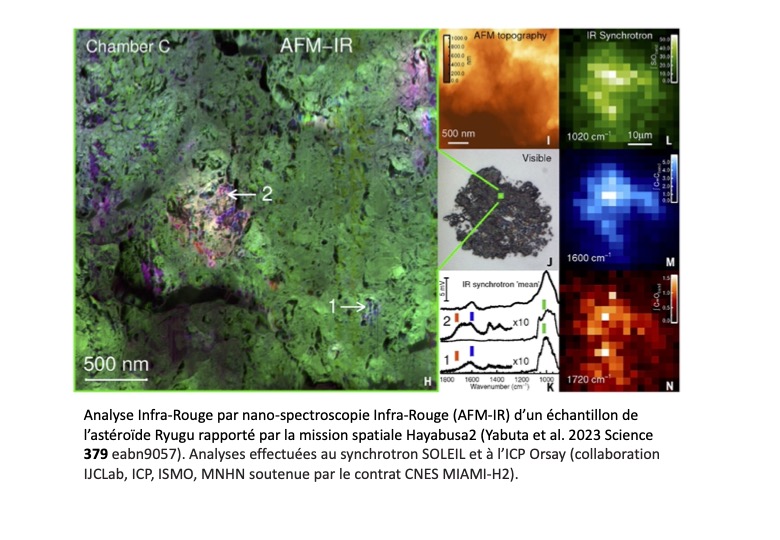
The Hayabusa2 space mission has brought samples from the carbonaceous asteroid Ryugu back to Earth. The journal Science published a series of articles, including an article concerning the macromolecular organic matter of Ryugu. Scientists from CNRS (INSU, IN2P3, INP and INC), Université Paris-Saclay (IJCLab, ISMO, ICP), MNHN, Université Grenoble Alpes, Sorbonne-Université and ENS-Lyon participated in this study. The researchers of the Astrophysics and Cosmochemistry team of the A2C Pole of IJCLab, in collaboration with the ICP, the ISMO, and the MNHN were more particularly involved in the study of the chemical composition of the samples of Ryugu by micro- infrared (IR) spectroscopy at the SOLEIL synchrotron and in nanoscale IR analyzes carried out with the AFM-IR instrument at the ICP (Orsay), thanks to the support of CNES (MIAMI-H2 Project). This work shows that organic matter from Ryugu has characteristics consistent with those of chemically primitive carbonaceous chondrites of the Ivuna type (CI). These CI meteorites, of which Orgueil is an emblematic example, underwent low-temperature aqueous weathering on the parent body. The organic matter of Ryugu is composed of an organic diffuse phase associated with hydrated silicates present in the matrix, and sub-micrometric phases (patches and nanoglobules) identified using AFM-IR.
Isotopic analyses, carried out in particular at the MNHN, show that the organic matter of Ryugu is enriched in deuterium and nitrogen-15, and therefore most likely formed in the protosolar cloud, or in the outer regions of the protoplanetary disk. The diversity of organic matter compositions at Ryugu suggests that the episode of aqueous weathering that formed the hydrated silicates in asteroid Ryugu's parent body also had a variable effect on organic matter composition.





